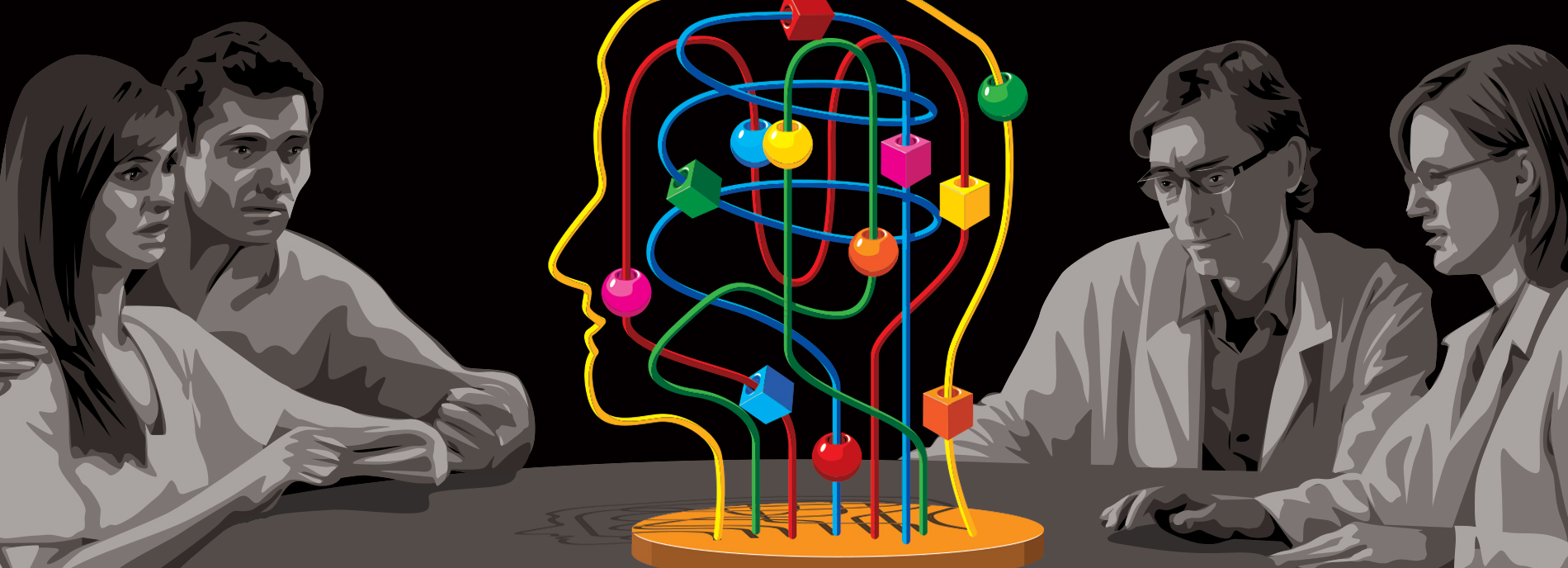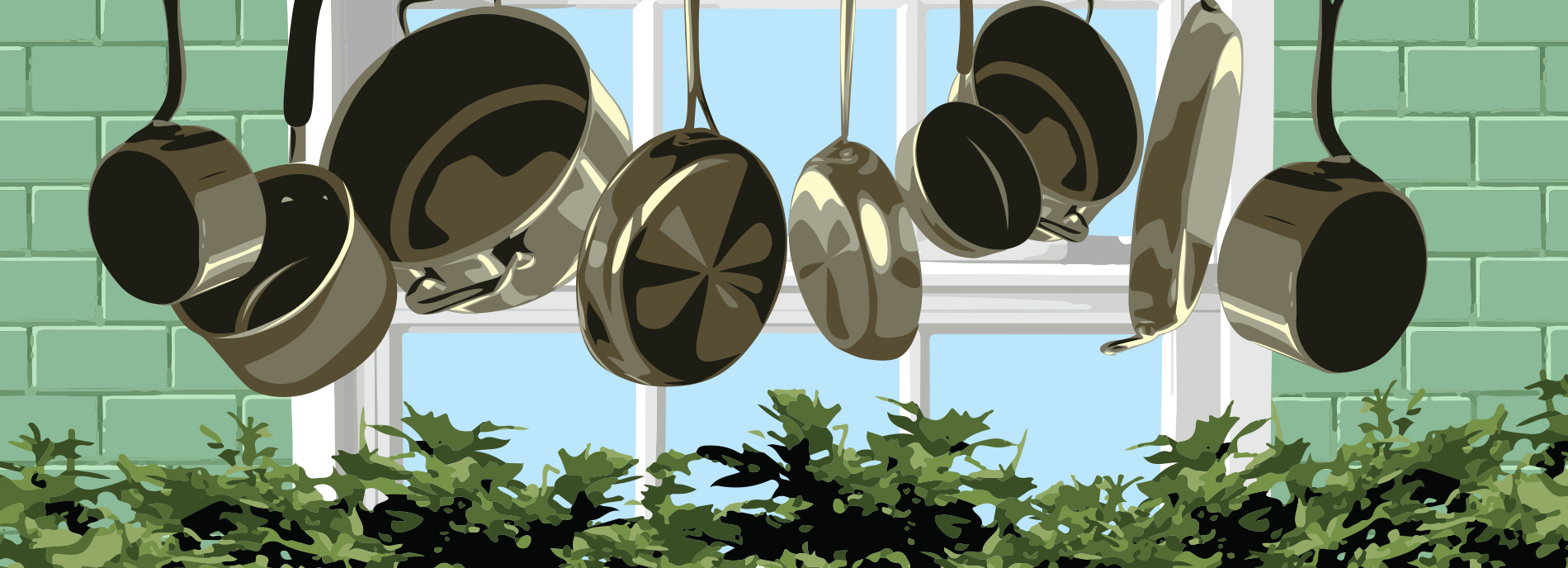
The pioneers: How parents are experimenting with marijuana for autism
Meet the backyard marijuana growers and home chemists who are rushing in where scientists fear to tread.
Editor’s Note
The article below is the first in a four-part series on the unique relationship between researchers and families in the autism community. The second part of the series goes live 21 September.
Listen to the Spectrum podcast to hear more from the parents and scientists featured in the Family Ties series, as well as the reporters’ experiences behind the scenes:
K
arlee lives in a quiet town in southeastern Washington. Last year, she put in a new cedar fence around her home. The fence is 6 feet tall, and behind it Karlee grows tomatoes, zucchini and marijuana. As it matures, the sweet smell of pot starts to waft into the neighborhood. This is Karlee’s cue that it’s time to pick the leaves and have them processed into oils. She gives these to her 13-year-old son, who has autism. (Karlee requested that her last name not be used, to protect her son’s privacy.)Spencer, her boy, was having increasingly aggressive tantrums and was becoming harder to control. By the age of 11, he was lashing out with “run-by slappings” of his sisters, and threatening to take his own life and his parents’. Terrified that his aggression might force the family to consider other housing options, Karlee turned to marijuana two years ago, cast as a miracle cure in an internet success story she had read. She suspected the story was “baloney,” but she was desperate. She soon became a believer: A twice-daily dose of marijuana dramatically alleviated Spencer’s anxiety within a week. He stopped hitting his sisters and, earlier this year, shocked his mother by asking to attend a middle-school dance. Karlee watched in the corner, crying, as he danced for the first time with a girl.
Meanwhile, neurologist Gregory Barnes keeps his marijuana derivative inside a lockbox, stored inside a biometric safe, inside a locked pharmacy. This year, Barnes plans to start the first clinical trial to test the effect of cannabidivarin (CBDV) on children who have both autism and epilepsy. (CBDV is one of marijuana’s many active ingredients.) In the nearly two years Barnes has been trying to get his trial off the ground, agents from the U.S. Drug Enforcement Agency (DEA) have paid two visits to inspect his facility — and he’s expecting a third.
Medical marijuana is legal in many states, including Washington, but the federal government still bans its use. The DEA ranks all compounds extracted from marijuana as Schedule 1 drugs — meaning they have “no accepted medical use and high potential for abuse.” CBDV and the closely related cannabidiol (CBD) do not produce the high associated with marijuana. Still, their Schedule 1 status put them in the same league as heroin and LSD, a more dangerous one than cocaine or oxycodone.
In 2011, the then-governors of Rhode Island and Washington petitioned the DEA to reclassify medical marijuana as a Schedule 2 drug. The change would have enabled states to regulate safe access to medical marijuana for those who need it without violating federal law. But in August, the DEA reaffirmed its stance, based on a recommendation by the Food and Drug Administration (FDA) and the National Institute on Drug Abuse. The DEA did relax some rules, however, inviting universities to apply to grow marijuana for “research purposes.”
These stark contrasts leave the state of marijuana research for autism in a bizarre state of flux: Marijuana is simultaneously legal and illegal, easy to obtain and heavily restricted, a miracle cure and a completely untested treatment navigating the first rounds of clinical trials.
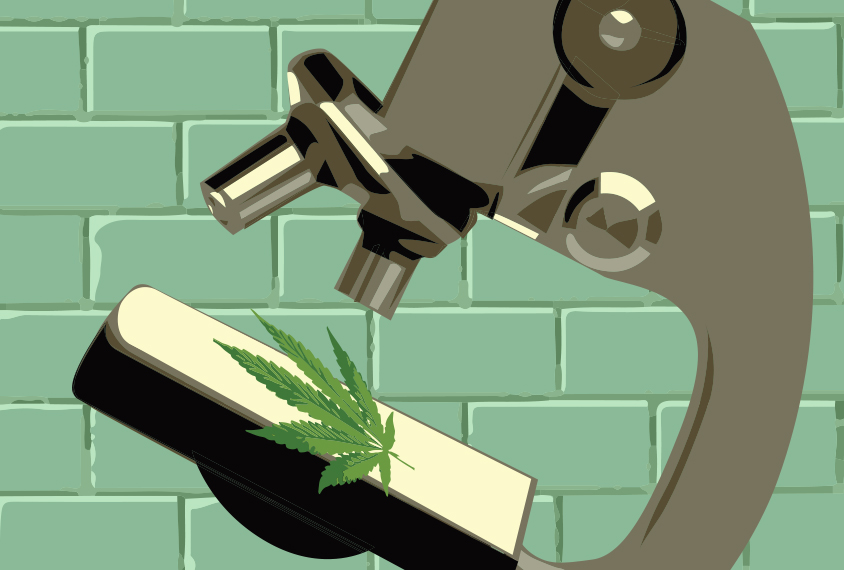
At the crux of the contradictions lie important questions: Is marijuana a legitimate treatment for autism? And is it safe to give to children? Many families feel they already know the answers. But researchers say these questions need to be addressed in a controlled, rigorous way.
“I’m OK with approving these things and making them accessible for people with treatment-resistant problems,” says Orrin Devinsky, a neurologist at New York University who is studying the effect of CBD on epilepsy. “By the same token, we as a political, medical and scientific society should be moving for high-quality scientific data. If it’s safe and effective, people should be able to use their prescription plans and get it; if it’s dangerous or if it’s ineffective, nobody should get access to it.”
”“Mothers like me, we consider ourselves pioneers in this. We’re the newbies.” Leslie Johnson
Home cooking:
C
alifornia became the first U.S. state to legalize medical marijuana, mainly for adults with severe chronic illness such as cancer or AIDS. Since California’s decision in 1996, 24 states and the District of Columbia (Washington, D.C.) have followed, and since 2012, four states and Washington, D.C., have legalized recreational use of the drug. So far, only Pennsylvania specifically permits medical marijuana use for autism, but in the past few years, parents of children with epilepsy across the nation have adopted this approach.Much of this enthusiasm stemmed from the widespread media coverage in 2013 of Charlotte’s Web, a marijuana strain with high levels of CBD. The strain reportedly helped its namesake, Charlotte — a young girl with a form of epilepsy called Dravet syndrome — go from having hundreds of seizures a week to being practically seizure-free. Perhaps because epilepsy frequently accompanies autism, parents soon began giving marijuana to their children with autism, and reporting great successes. Medical societies warned that these claims were only anecdotal. But to some parents, marijuana was no worse than the conventional drugs that didn’t work and triggered terrible side effects.
Around that time, Karlee was at her wits’ end. A visit to doctors had yielded only a prescription for Risperdal (risperidone), which Spencer, then 11, had tried before. That and similar drugs had “put a wet blanket” over her son and had done little to help him. Spencer tried behavioral therapy, but driving to the closest clinic took Karlee more than three hours each way. So after reading the article about marijuana, she drove to Seattle, nearly 300 miles away, in search of a doctor willing to prescribe it for a child. Even though Washington’s approved indications for marijuana use don’t include autism, it does allow use for severe gastrointestinal issues, which Spencer has in abundance.
Giving her son marijuana was not an easy decision for Karlee. “Growing up, it was: ‘Drugs are bad, drugs are bad, marijuana is terrible, it’s a gateway drug for heroin and meth and so on,’” she says. “I still have that wrestle in my head thinking, ‘Oh my gosh, you’re doing it to get him high.’” Ultimately, she says, she realized that if she didn’t give him marijuana, she’d end up giving him something even more dangerous.
With her prescription in hand, Karlee was able to visit a for-profit medical dispensary that sells marijuana oils and tinctures — marijuana extracts steeped in alcohol. At these dispensaries, customers are greeted by a bewildering variety of choices. Marijuana includes a mix of hundreds of bioactive compounds, and plant breeders have created hundreds of strains, each of which harbors a different proportion of these chemicals.
Tetrahydrocannabinol (THC), the chemical that creates the high, is the best-known compound. It acts on the CB1 receptor in brain cells that regulate pain, mood and appetite. By contrast, CBD does not lead to a high and has been well studied in animal models for its anti-seizure properties. Unlike THC, it binds to multiple receptors, but it’s unclear which of these pathways mediates its effect on seizures.
Families must choose a strain based mainly on the dispensaries’ advice or on internet lore — a fact that makes some researchers extremely nervous. “I worry a lot about a physician sending a child, or a child’s parents, to a dispensary to have a conversation about what type and dose and route of administration of cannabis should be given to a kid,” says Ryan Vandrey, associate professor of behavioral sciences at Johns Hopkins University in Baltimore. “To me, that’s completely backwards,” he says. Vandrey studies the effects of marijuana exposure on adults.
Spencer responds best to tinctures that contain roughly a 3-to-5 ratio of THC to CBD, Karlee says. She continually experiments with this ratio, and when and how often to dose, to find the most effective treatment. As Spencer has grown, she has needed to give him more and more of the compounds. To counteract his rising tolerance, she sometimes tapers the drug concentration down for a week, then raises it back up. She has also used a high-THC oil at night to help Spencer sleep.
Meanwhile, there is no guarantee that what a dispensary says is in a product is really there. Plants, tinctures or oils obtained from dispensaries may also contain pesticides or other potentially dangerous byproducts. The FDA issued six warning letters in 2015 and eight in 2016 to companies that market CBD products, saying the products did not contain the CBD levels the companies claimed, and some had none at all. Karlee has a workaround for this problem: She sends her homegrown oils to a private laboratory to confirm the levels of CBD and THC.
This option is not available to Leslie Johnson, who lives in New Jersey and gives medical marijuana to her adult son, John, to help him cope with severe epilepsy and autism. Devinsky prescribed marijuana for Johnson’s son in January 2015 after a seizure medication lowered John’s white blood cell count to a dangerous point. But New Jersey permits dispensaries to sell only the dried plant, lozenges and topical treatments. So Johnson has to figure out how to turn the plant into something more appropriate than a joint to give to her son. “I have no idea why New Jersey came up with their policy,” says Devinsky.
Without official guidance, parents in New Jersey form informal support groups, sharing recipes designed to enhance CBD levels in a plant extract while minimizing the THC. Johnson, who says she dislikes even the smell of marijuana, was at first completely overwhelmed. “Here I am, a goody two-shoes, I never tried it before myself,” she says. But nearly two years later, she is an expert — receiving as many as three calls a week for her marijuana recipe. Her method involves a process called ‘decarbing,’ which bakes $500 worth of the plant in turkey roasting bags, supposedly bringing the CBD to the surface. She then uses a MagicalButter machine — a $200 contraption that infuses herbs into butter or, in Johnson’s case, marijuana leaves into a mixture of soy lecithin granules and organic coconut oil.
“You’re basically searching for as close to a version of Charlotte’s Web, which is out in Colorado, that has the highest CBD,” Johnson says. But she can’t confirm that her home chemistry experiment enhances CBD at the expense of THC: There are no testing labs available to parents in New Jersey, and it is illegal to ship marijuana oils across state lines.
Still, the drug has worked better than she expected, Johnson says. Her son became calmer and more content after the first 1-milliliter dose. During the year and a half he has used the drug, Johnson has lowered the dosage of his seizure medications significantly. She says he has had, at most, three severe seizures, compared with at least one per month before. In the past few months, she has been experimenting with strains that have slightly more THC, which she says seems to have the best calming effect. “You do anything you can for your son, if it’s going to help him,” she says. “Mothers like me, we consider ourselves pioneers in this. We’re the newbies.”
Bad vibes:
M
arijuana’s effects on a child who takes it regularly are unknown. Many parents assume the drug is safe simply because they have taken it themselves, but occasional use by a young adult is not the same as a child taking it daily for years. In fact, little is known about how the chemicals it contains work in the brain at all. In a 2013 study, researchers in Italy reported that blocking the CB1 receptor alleviates seizures as well as memory problems in a mouse model of fragile X syndrome, an autism-related condition.This finding suggests that CBD, which may also block the CB1 receptor, would be beneficial for treating autism. THC — which activates the receptor — might exacerbate the condition, says lead researcher Andrés Ozaita Mintegui, at the Universitat Popmeu Fabra in Barcelona, Spain. On the other hand, a study last year found that drugs that activate the endocannabinoid system, as THC does, improve learning and memory in fragile X mice. To complicate matters further, a study published in April found that CBD might turn into THC when it comes into contact with stomach acids.
Most studies in people have looked at the effects of long-term marijuana use as a recreational drug, and raise some concerns. A 2012 study showed that 19 recreational marijuana users who began smoking before age 16 had problems with cognitive function. A 2014 study by the same team found changes in brain connectivity that tracked with impulsiveness in 25 regular marijuana smokers. Another study followed more than 1,000 people from birth to 38 years of age and found that those who used marijuana regularly as adolescents showed a decline in their intelligence quotients in adulthood.
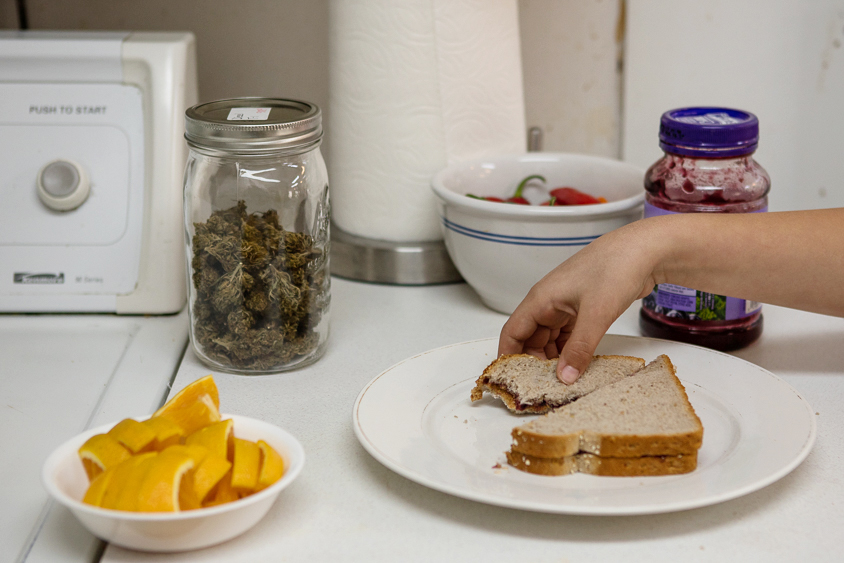
These kinds of data may — or may not — apply to medical uses of marijuana, says Vandrey. “You’re not going to have a 5-year-old autistic kid smoking a 5-inch blunt, having a competition with his buddies to see how much he can smoke,” he says. “So the consequences that we associate with cannabis right now — addiction, brain changes, vomiting, paranoia, panic attacks, acute psychosis — all of that kind of stuff may be completely irrelevant to the 5-year-old with autism. But we have no idea.”
Sometimes, the effects are unpredictable even from one month to the next. Shafali Jeste, a child neurologist at the University of California, Los Angeles (UCLA), treats a 13-year-old boy with autism who was given marijuana by his family to help him sleep. It’s not clear exactly what happened, but the parents were trying different plant strains, and at some point the concentration of THC may have been much lower than usual, plunging the boy into withdrawal, Jeste says. The boy, who is nonverbal, ended up in the emergency room seemingly in the throes of severe hallucinations. He needed to be physically restrained and sedated with drugs. Despite this scare, the parents resumed treating the boy with marijuana.
Jeste does not endorse the use of marijuana, but makes sure she knows if children are taking it, so she can try to track its effects with other medications she prescribes. She says she understands parents’ desperate search for something that might work. These parents urgently need research that can guide them through their choices, she says. “It’s our job to do the trials. I’m not going to say, ‘Oh there’s no evidence, I’m just going to pooh-pooh the whole thing,’” she says. “We need to do studies.”
Into the weeds:
S
ome studies are underway for treating epilepsy with marijuana. Shaun Hussain, a pediatric neurologist at UCLA, studies a rare form of epilepsy called infantile spasms that halts a child’s development. One of the best conventional treatments for infantile spasms costs $150,000 per course and hampers children’s immune systems so severely that even an ordinary ear infection can kill them.Over the past few years, many families that Hussain treats instead began turning to marijuana. Some families saw no benefit, but others reported that their children went from having hundreds of seizures a day to being seizure-free, Hussain says. “I thought, ‘This is wishful thinking, these are anecdotal seizures, they are misleading themselves,” he says. So he performed electroencephalograms, which detect the erratic brain activity that occurs during seizures, and confirmed these reports. He was also impressed by a survey of parents who treat their children’s epilepsy with marijuana, which suggested that the drug could be effective.
Intrigued by this evidence, in 2014, Hussain launched his ‘upside-down’ clinical trial — in which research follows widespread use rather than the other way around. He did an online survey of the parents of 117 children who were trying high-CBD marijuana strains to curb their child’s epilepsy. About 85 percent of the parents said their child had fewer seizures after taking the drug, and 14 percent said their child had become seizure-free. Hussain emphasizes that the survey is uncontrolled, prone to placebo effects and bias. But he was encouraged enough by the results that he decided to partner with Insys Therapeutics, a pharmaceutical company based in Chandler, Arizona, that makes a synthetic form of CBD. He is recruiting children with infantile spasms to test the product.
Devinsky was similarly thrust into the world of medical marijuana by families, and was also initially skeptical. But after seeing hints of the drug’s positive effects, he says, he felt the need to follow up these reports with actual research. He partnered with GW Pharmaceuticals, which manufactures Sativex, a compound containing both CBD and THC. Sativex is approved for multiple sclerosis tremor in many nations, but not in the United States; GW is based in the United Kingdom.
Devinsky and his colleagues tested a new CBD compound made by GW in nearly 200 children and adults across 11 epilepsy centers in the U.S. The participants all had severe childhood epilepsy that had not responded to conventional treatment. By the end of the trial, 20 of the participants were free of seizures. But 20 participants had severe side effects, such as diarrhea and nausea; 9 of them showed a dangerous spike in seizure frequency called ‘status epilepticus’ that may have stemmed from the drug. The trial was open-label, meaning that participants knew what they were taking and why — so it’s possible these reports were influenced by a placebo effect.
In the meantime, GW has been conducting a clinical trial that is yielding promising results. The company reported in March that in a late-stage trial, its CBD compound Epidiolex reduced the frequency of seizures by 39 percent in 60 participants with Dravet syndrome. By contrast, the placebo lowered seizures by 13 percent. In June, GW reported similarly promising results for children with another form of epilepsy, Lennox-Gastaut syndrome. The company has launched a late-stage trial of Epidiolex for tuberous sclerosis, an autism-related condition, and aims to file a New Drug Application – the first step to getting drug approval — with the FDA in 2017.
”"If it's safe and effective, people should be able to get it; if it's dangerous or if it’s ineffective, nobody should get access to it." Orrin Devinsky
Spark it up:
M
arijuana has direct effects on autism features as well — at least, according to anecdotal reports from parents. Some parents say their children seem calmer, more contented and aware when given marijuana. Some doctors prescribe medical marijuana for children who have severe aggressive outbursts and do not respond to antipsychotics. Jeste says many of the children with autism she knows are given marijuana to help them sleep — as in the case of the boy who ended up in the emergency room.One of the challenges when designing marijuana studies for autism will be finding a way to objectively measure these anecdotal observations, Jeste says. “Are we trying to improve social communication, are we trying to improve sleep, are we trying to improve irritability? What are we trying to move?”
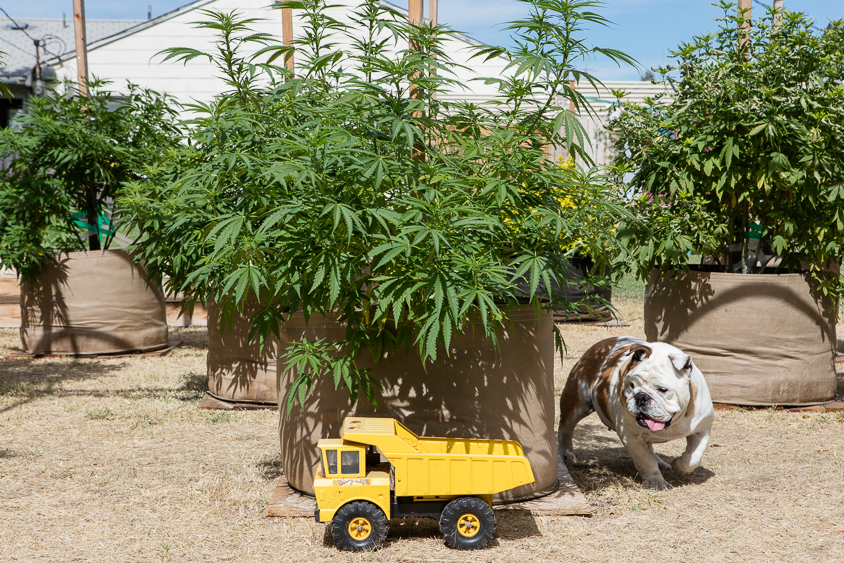
It’s also unclear whether marijuana research for autism would focus primarily on CBD, which has been shown to be safe, or include THC, which many parents of children with autism say is most beneficial. The compound Barnes is testing in his small trial is made by GW and is almost entirely made up of CBD. A tiny fraction of THC comes along for the ride when CBD is purified from plants, but too much THC might be toxic to the developing brain, Barnes says. He plans to recruit 10 children who have both autism and epilepsy. The trial aims to primarily measure whether the drug reduces the frequency of seizures, but Barnes also plans to look at autism features such as repetitive behaviors and sensory sensitivity, and the drug’s effect on sleep.
To launch the trial, Barnes first had to apply for a license with the DEA for permission to work on a Schedule 1 drug, a process that includes at least one visit from DEA agents. The agents ensure that the compound is kept in a secure facility that only certain personnel can enter and has electronic security measures — something Barnes did not initially have. He also needed to fill out a new form for each stage of his study, and for any changes to the study design.
Hussain says he knew setting up his clinical trial would be difficult, but it proved even more challenging than he had expected. Apart from getting the DEA’s permission, he had to have his protocol approved by the California State Department of Justice and the FDA. He also needed to navigate university politics, convincing staff there that the study would be legal, and wouldn’t damage their reputation. “You need buy-in from your colleagues who are helping you recruit patients — who are helping you conduct studies; you need buy-in from your department at your university; you need buy-in from the university-wide establishment; you need buy-in from the legal folks at your university,” he says. “As this goes forward, you keep getting new layers of bureaucracy.”
Hussain says that on his own, the barriers might have seemed unnavigable. He and Barnes both got help from their pharmaceutical company partners, which provided their compounds as well as consultants for the mess of federal forms. Researchers without pharma partners must apply to receive marijuana through the federal government. The entire federal supply comes from a single site at the University of Mississippi in Oxford, although the new DEA policy may change that. Last year, the government approved 23 requests for marijuana for research projects.
Parents, meanwhile, are continuing to lead the way in testing marijuana. When Barnes was involved in the Dravet syndrome trial, he was deluged with calls from parents eager to enroll their children. He anticipates getting as many as five calls a day for the 10 spots in his autism trial.
Some parents aren’t waiting for trials. Karlee has a permit to grow marijuana in her backyard, so she no longer has to drive for hours to a dispensary. But when Washington state legalized the sale of recreational marijuana in July 2014, it also tightened restrictions on dispensaries and on individuals growing the plant. “We’re trying to make sure we’re obeying the law, but it’s a little vague,” Karlee says.
Last year, Karlee harvested enough marijuana to provide oil for Spencer for the entire year. In the next few weeks, she will be starting her second harvest, stripping the plant’s leaves to make the medicine she says changed everything for her family.
Return to “Family ties” series
Syndication
This article was republished in The Atlantic.
Recommended reading

INSAR takes ‘intentional break’ from annual summer webinar series

Dosage of X or Y chromosome relates to distinct outcomes; and more
Explore more from The Transmitter

Machine learning spots neural progenitors in adult human brains
Xiao-Jing Wang outlines the future of theoretical neuroscience

